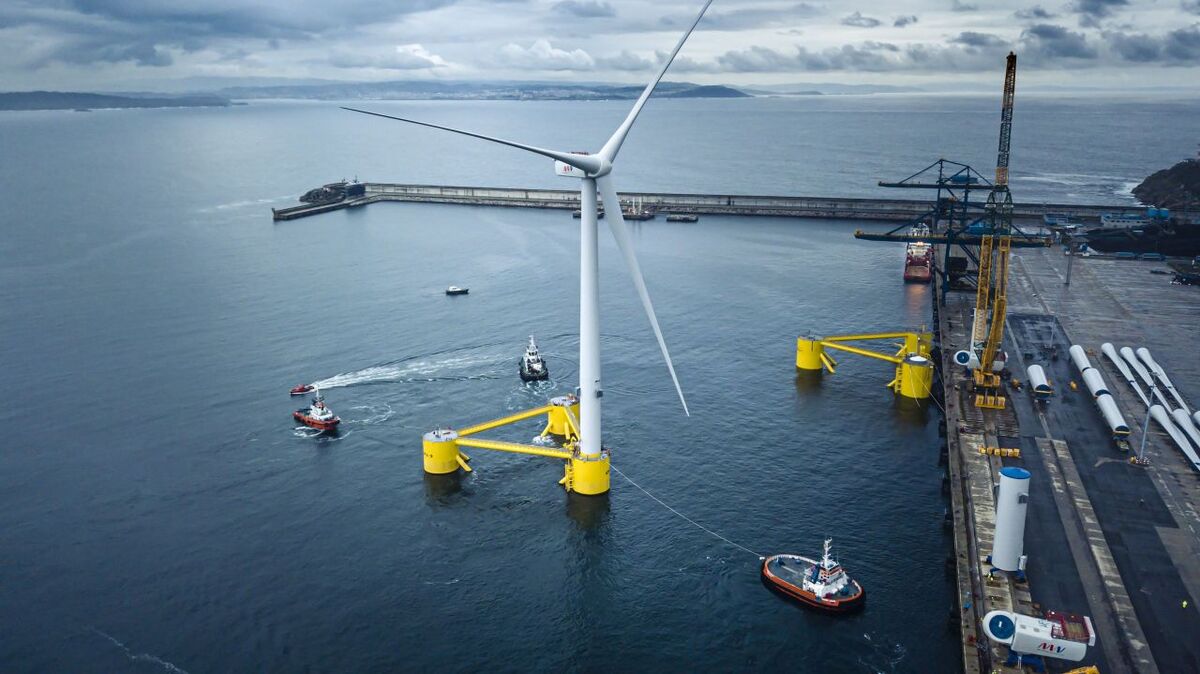The Spanish Government is to launch a wide-ranging public consultation on a regulatory framework for offshore windfarms off its coast
Hoping to hold its first auctions for offshore wind in Q1 2023, the country has declared a commitment to having up to 3 GW of operational offshore wind by 2030.
The public consultation, which is due to be launched imminently, will provide developers and other stakeholders with the opportunity to provide comments to the authorities. It is an important next stage in the development of an offshore wind sector in the country, but industry sources suggest that a lack of detail in the consultation could make it difficult to meet the Q1 2023 target.
The consultation follows approval in December 2021 by Spain’s Council of Ministers of an Offshore Wind Roadmap intended to promote the adoption of offshore wind in the country and kick-start an industry based on the use of floating wind turbines.
Spain is the second-most important country in Europe for onshore wind, with more than 27 GW of installed capacity. It has built a major wind industry on the back of this but does not have any offshore wind.
Speaking in advance of the launch of the public consultation, Asociación Empresarial Eólica (AEE) technical director Tomás Romagosa told OWJ, “We do not expect the consultation to be particularly detailed. It will look at auction design, permitting and grid connection, but will not address any of these in a very clearly defined way.”
As Aegir Insights head of research and analytics Maria Bohsen explained, although the Offshore Wind Roadmap included several initiatives covering legal and support mechanisms – and highlighted plans to invest heavily in domestic R&D and build a domestic supply chain to position Spain as a European centre for floating wind – it also had little detail about auctions or permitting. This is despite the fact that the offshore wind industry sees plenty of potential in Spain.
“Spain has three main areas of interest for offshore wind. These are the northwest of the country, the east coast and Canary Islands,” Ms Bohsen explained. “All will require floating wind. The grid is generally favourable for offshore wind in areas such as Galicia, Andalusia and Catalonia, but in the Canary Islands it is less well developed and there is only a low-voltage system.
“Spain has a well-developed manufacturing industry for towers, foundations and vessels and there are good port facilities. Several developers are already looking to add Spanish sites to the portfolios and more than 20 potential projects have been announced there.”
According to Aegir Insights’ latest report on the Spanish market, Iberdrola is developing two projects in Galicia and one offshore the Canary Islands; BlueFloat has a portfolio of three projects, totalling 1.3 GW; Greenalia is looking to dominate development in the Canary Islands and has announced five ‘steppingstone’ projects; and RWE, Nautilus and a number of other developers are planning smaller projects.
But despite increased interest from developers, as Mr Romagosa explained, such is the lack of detail in the consultation that it will be hard for the government to to have a full framework in place by the end of 2022, in order to hold the first auction in early 2023. “What is at least clear,” Mr Romagosa said, “is that the auction will almost certainly take the form of a contract for difference CfD of the type that has been used successfully elsewhere.”
BlueFloat Energy country manager Spain Javier Montfort agreed the auction will probably take the form of a CfD. “A CfD will provide revenue certainty and an adequate financing structure,” he told OWJ.
It is also expected the auction will make use of qualitative criteria, in the form of points for social and environmental aspects of projects.
“The energy price won’t be the one and only lever for awarding the projects,” said Mr Montfort. “Social and environmental criteria could be included such as equity participation by local investors, early stakeholder engagement, the technical maturity of projects and project transparency.”
BlueFloat’s view is that it is particularly important to ensure maximum engagement with stakeholders through early dialogue and transparency. “We believe this is the best way to ensure the projects will be developed successfully,” Mr Montfort said.






